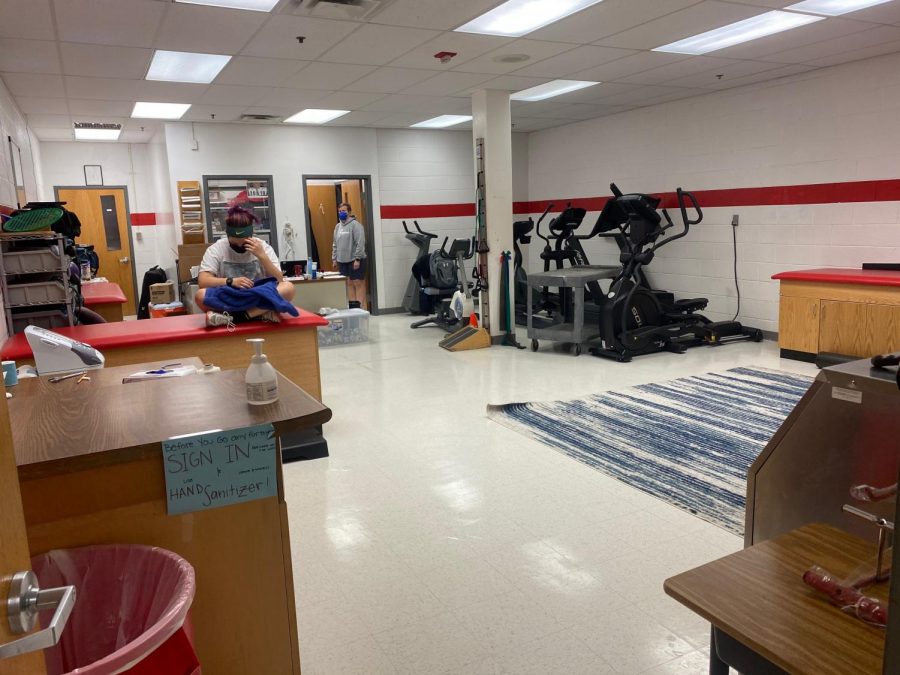Athletic training continues despite Covid-19
Many systems have had to change since the start of COVID in order to maintain safety and follow new guidelines. Among these, athletic training has had to make adjustments to their usual practices.
Last spring, and early this school year, sports took a halt, which limited the need for rehabilitating injuries. Athletic trainers took this time to revise their protocols.
“When sports seasons are put on hold, it allows for athletic trainers to take time to review policies, update paperwork and do rehab with athletes either in person or virtually,” Athletic Trainer Kathy Ayers said.
When sports started back up, new adjustments were put into effect across the athletic departments.
In all, the athletic training department has not had to make many changes. Injuries are still able to be treated, however, new steps have been created in order to protect students and faculty from COVID.
“As a licensed healthcare professional, we will always be ready and able to treat injuries as they happen,” Ayers said. “COVID has changed the capacity of the athletic training room and a few extra steps are in place to keep all parties safe.”
Along with access to the trainers, students also have access to the training room and its other resources.
The training room has had to implement capacity limits, however, the needs of emergency situations are also being accounted for.
In a normal year, many students are in need of the resources of the athletic training department. This year, the decrease in sports numbers has led to a decrease in injuries, however, many athletes are facing problems due to the unusual circumstances of their preseasons.
“Due to the fact the number of athletes is down, we have seen a decreased number of injuries,” Ayers said. “As seasons progress, we have seen a few more overuse injuries due to the fact many athletes did not train as hard out of season.”
Trainer’s jobs go further than treating injuries as they occur. Trainers also help prevent injuries before they happen, by developing warm-up programs and stretches that loosen your muscles and increase your flexibility.
As mentioned in The importance of stretching by Harvard Health publishing, warm-ups get your blood flowing which makes your muscles more pliable and stretching prevents too much stress on your muscles.
Athletic trainers have, and will always be important to the health of athletes.
“Athletic training resources are important for in season and out of season athletics.” Ayers said. “Athletic training services are important for providing education for prevention of injury to athletes and coaches, evaluating injuries when they occur, providing treatment for the injuries and rehabilitating athletes so they can return safely to play.”

Senior Lilli Dalrymple is the Academics Editor for the A-Blast. She is entering her second year on staff after previously being a staff writer. Outside...













